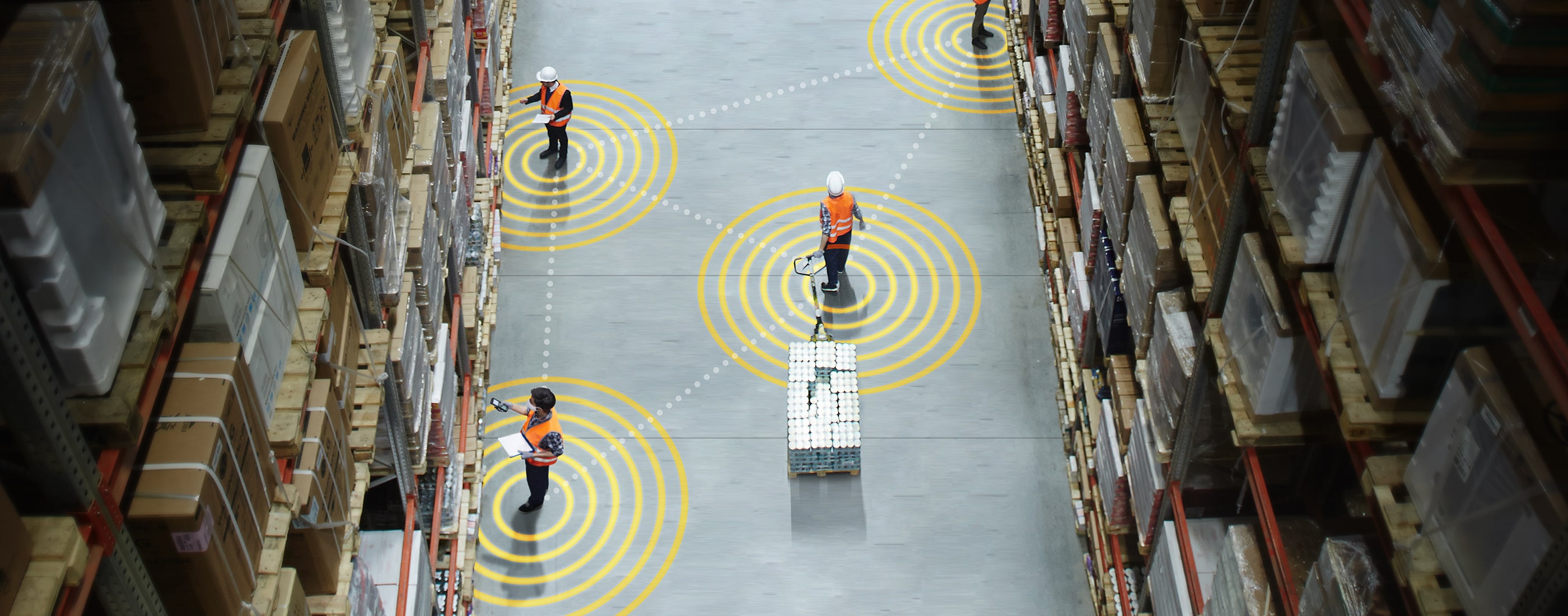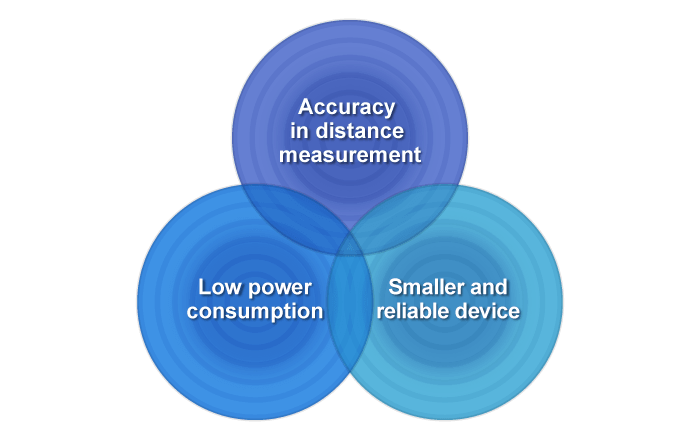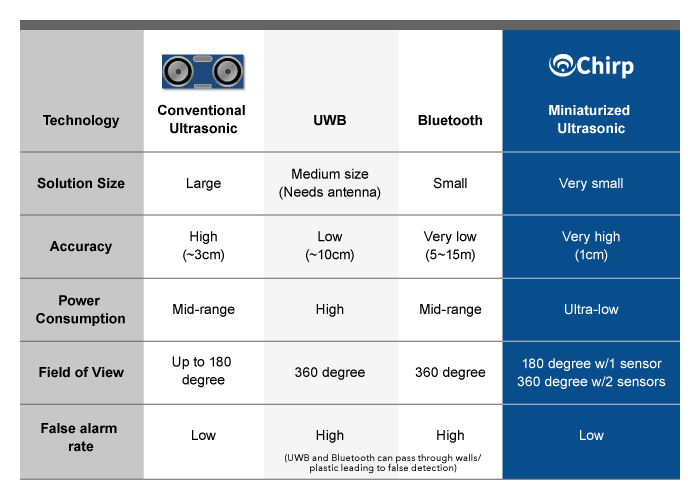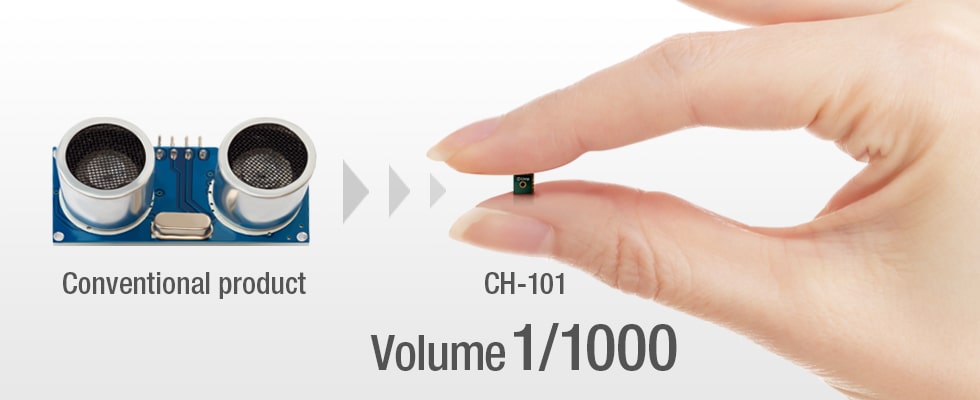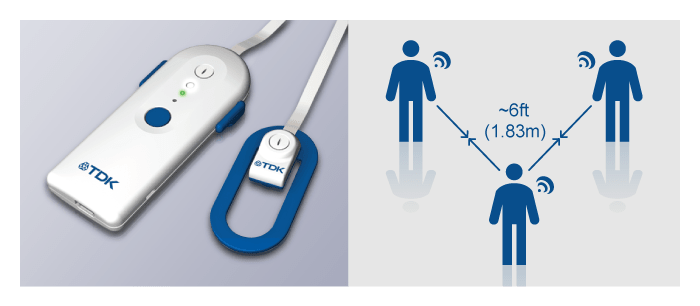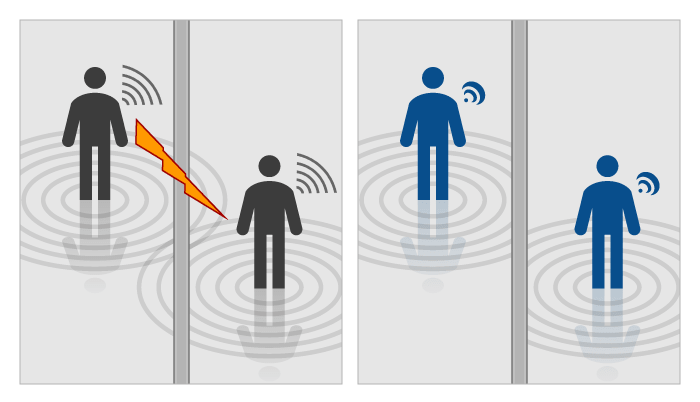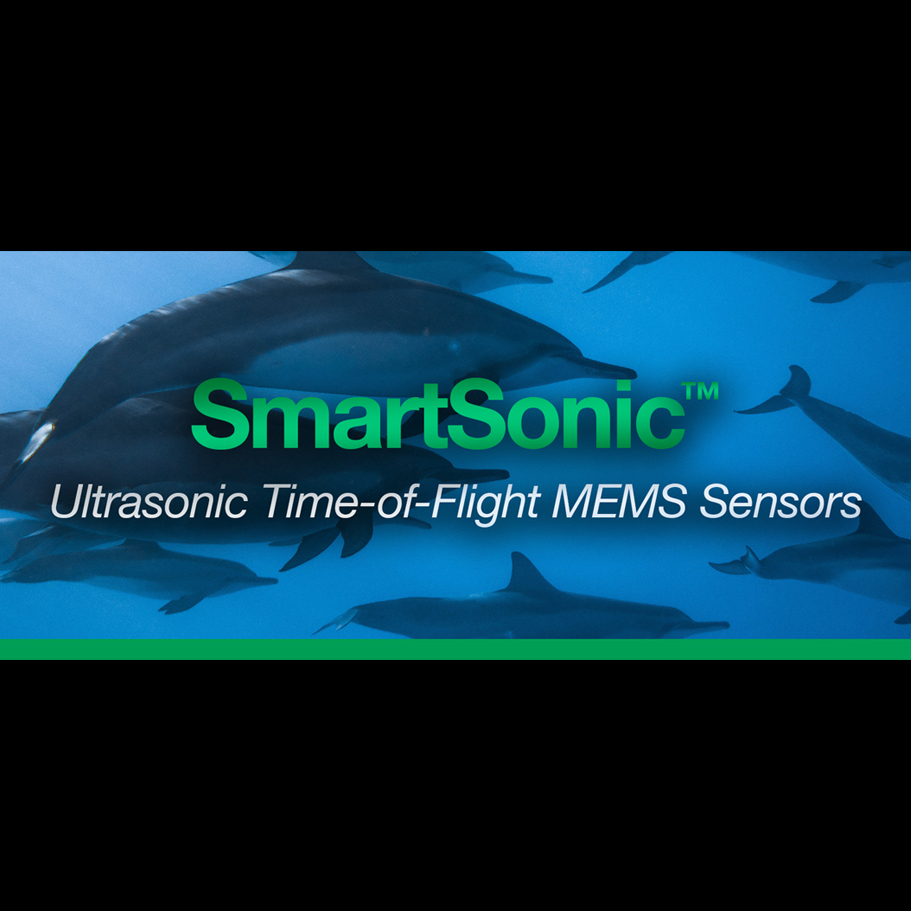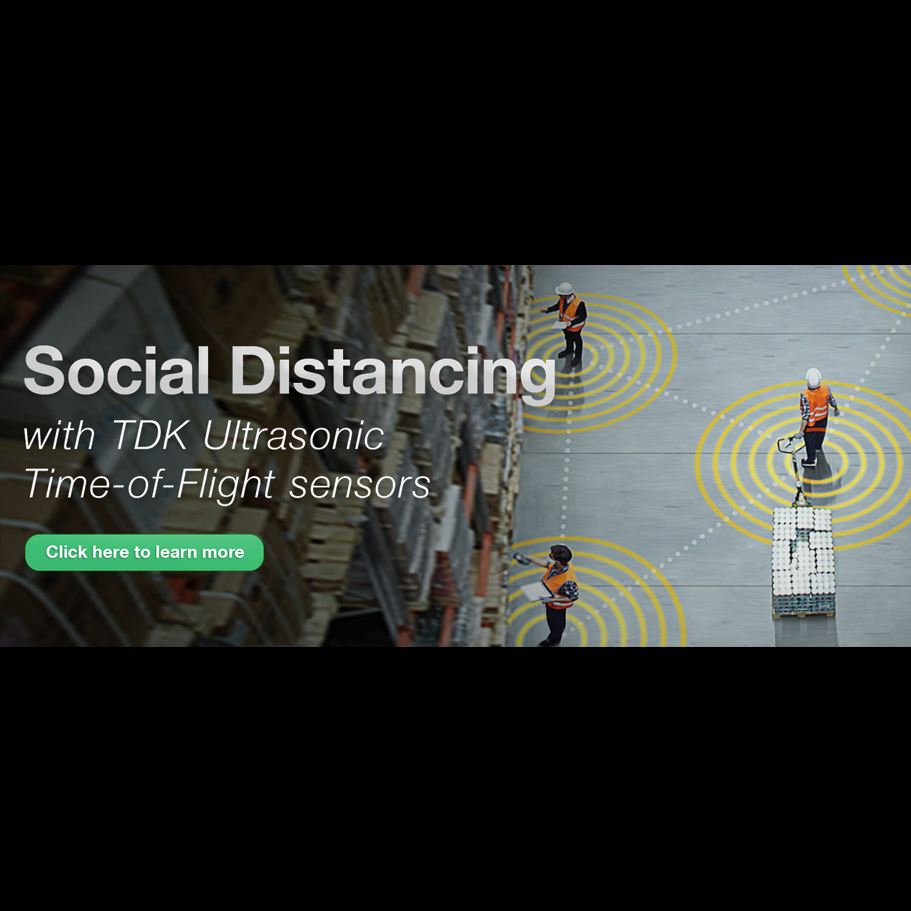Ultrasonic Sensors Can Measure Distances Between Workers Instantaneously
Ensuring Social Distancing at Businesses
To prevent the spread of infectious diseases, keeping a safe distance from others and reducing contact to a minimum are essential. For businesses, it is also important to mitigate the risk of increased infections damaging supply chains, corporate reputation and productivity—let alone creating an environment allowing workers to work with peace of mind. To address these challenges, companies around the world are seeking practical solutions including alarms that ensure social distancing between workers and tags that enable contact tracing of infected individuals.
How Ultrasonic Sensors Compare to Conventional Distance-Sensing Technologies
Conventional technologies commonly used to measure distances to people/objects and to ascertain their positions include Bluetooth Low-Energy (BLE)*2, RFID trackers*3, ultra-wideband (UWB)*4, and ultrasonic sensors. What are the key requirements for real-world applications of social distancing alarms and contact tracing in today’s environment? “Accuracy in distance measurement, low power consumption for longer battery life, and a smaller and reliable device with near-zero false warnings,” said Joseph Bousaba, president of Chirp Microsystems, a TDK Group company which engages in the development of ultrasonic sensors.
Distance measurement is as accurate as less than 1cm for ultrasonic sensors and less than 10cm for UWB, compared to as much as several meters for BLE, which is not enough to detect two people as they approach the recommended safe distance of approximately 2m. Moreover, ultrasonic sensors consume much less power than UWB, enabling a small compact proximity tag to operate several days on a single battery charge.
Practical Application of a Social Distancing Solution Using an Ultrasonic Sensor
CH101, developed by Chirp, is an ultrasonic Time-of-Flight (ToF) sensor that combines a piezoelectric micro-machined ultrasonic transducer (PMUT)*5, a power-efficient digital signal processor (DSP)*6, and a low-power CMOS ASIC in a mere 3.5mm × 3.5mm chip. The ultrasonic transducer mounted on the sensor transmits an ultrasonic pulse and receives a wave reflected back from the object. Using this Time-of-Flight (ToF), the distance from the object can be accurately detected. The CH101 has achieved remarkable miniaturization compared to conventional ultrasonic sensors, enabling it to be integrated into products such as wearable tags and badges attached to workers.
“Tags or badges can support both social distancing alarms and contact tracing.” David Horsley, co-founder and CTO of Chirp, discusses the features expected of a device for preventing infection. When two workers, both wearing a tag, get within 6 feet (approximately 1.83m) of each other, the tags can sound a warning. Furthermore, the incorporation of BLE into the tag enables the tag to record an encounter with others and store the history of encounters in a database. If a worker is found to be infected, all close contacts with him or her can be traced.
(Right) People with tags can be detected and alerted instantly when they get close to each other.
“Ultrasound-based sensors create near-zero false positives for social distancing,” according to Bousaba. Since ultrasound propagates through the air to measure distance, it does not detect contact between people who are separated by walls or glass. This contrasts with UWB, which may give false positives to people who get close to each other through a wall or plexiglass used to create social barriers now common at workplaces, as UWB emits radio waves which can pass through these barriers.
(Right) Ultrasound determines contact through the air, giving almost no false positives.
Bousaba emphasizes power consumption as well. “UWB works while searching for other devices, which constantly keeps it in the pairing phase and thus increases power consumption, while ultrasonic sensors cut down power consumption substantially.” A general UWB chip consumes approximately 400 mW in receive mode, while Chirp’s ultrasonic sensors require 0.7 mW to run, which is more than 500 times lower power. According to Bousaba, no battery recharge is expected to be necessary for one week (approximately 40 hours) in actual use. Minimizing maintenance cost is another key factor at factories with large numbers of workers.
Chirp’s ultrasonic sensors, which have achieved high accuracy, miniaturization, and low power consumption, are an ideal technology for solutions aimed at preventing infection by social distancing. Horsley suggested that, with no vaccine and no effective cure for COVID-19, solutions through technologies are strongly called for. “We are glad for the opportunity to apply our technology for good.”
For details about the Chirp brand ultrasonic sensor CH101, please visit the TDK Product Center.
Terminology
- Ultrasonic sensor: A sensor that detects the distance to an object by emitting ultrasonic pulses and measuring the time-of-flight (ToF) it takes for them to be reflected back.
- Bluetooth Low-Energy (BLE): A part of the Bluetooth standard, the short-range wireless communication technology. Because of its low power consumption and low cost, it is garnering attention a communication technology for use in IoT devices.
- RFID tracker: A technology that displays location information in real time by receiving information recorded on RFID (Radio Frequency Identification) tags with a receiver.
- Ultra-wideband: A form of wireless communication that utilizes an extremely wide bandwidth of more than 20% or more than 500 MHz.
- PMUT (piezoelectric micromachined ultrasonic transducer): A MEMS-based element that emits piezoelectric ultrasonic sound.
- DSP (digital signal processor): A microprocessor (a chip that implements the functionality of what is known as a CPU) specially designed to process digital signals.
